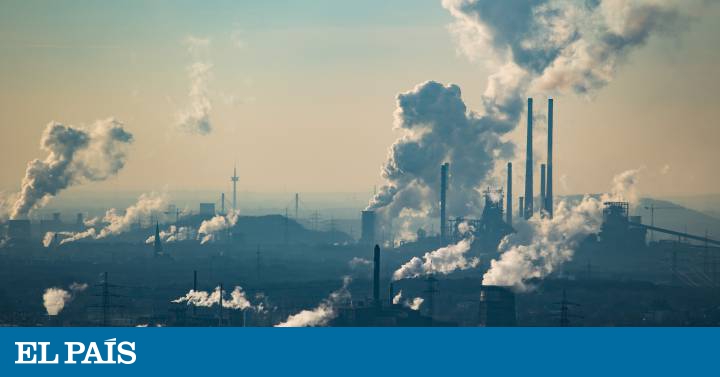For scientific specialists, and for almost everyone, although not for President Trump, it seems clear that stopping the extraction and use of fossil fuels, reducing polluting emissions and reforesting the planet are the steps to follow to fight global warming , but can we go further?
MORE INFORMATION
Smart agriculture to protect against climate change
A digital revolution to face the effects of covid-19 and combat poverty in the countryside
Fight poverty from climate change
“The times of denying climate change are over.
You have to take action, "says Rick Parnell, executive director of the Foundation for Climate Restoration, an American non-profit organization dedicated to" catalyzing action to restore the climate by the year 2050 ”.
The second global Climate Restoration forum, organized by this foundation and held virtually from Washington a week before UN Climate Week, proposes to safely and permanently remove excess CO₂ to return to pre-industrial levels .
To do this, it draws up a roadmap to facilitate governments and companies to get closer to the new technologies that exist in this field.
And it works with governments and politicians, technology entrepreneurs, investors, scientists, religious leaders, NGOs and citizens around the world with a single goal: to promote the use of technologies that remove CO₂ from the atmosphere in a commercially viable way.
Is that possible?
The second global forum on Climate Restoration proposes to remove excess CO₂ safely and permanently to return to pre-industrial levels
“Excess atmospheric CO₂ is the main driver of climate change.
Climate restoration is a critical component of any comprehensive strategy to ensure a sustainable environment.
Only a comprehensive approach to the climate crisis will guarantee humanity's survival.
All adaptation, mitigation and restoration efforts must be carried out in a concerted and urgent manner, "says Parnell. His foundation seeks to inspire a collective commitment to reverse global warming and restore a healthy climate for future generations.
"There are many organizations promoting the reduction of emissions for decades, that is why we focus on the commercial benefits that can be obtained by applying new solutions at competitive prices", explains Erica Dodds, doctor in Interdisciplinary Evaluation and environmental expert and member of the Foundation.
His organization's proposal is simple but difficult to carry out: invest more money in technological solutions, combined with “natural solutions” such as reforestation, agroecology and crops that coexist with the forest.
“A lot of people think it's just about reducing emissions, but those from 200 years ago are still there.
So we have to start the discussion of how to eliminate that, ”adds Dodds.
All of these emissions will remain adding to the new ones and accelerating global warming unless the problem is addressed.
Restoring the climate will "drain" this excess COá and return us to safe pre-industrial levels of less than 300 parts of carbon dioxide per million (ppm) in the air, says the academic.
Companies presenting at the forum say they can reduce CO₂ levels in the next 20 to 50 years, and expect their costs to be less than 1 to 3% of global annual GDP.
"As researchers continue to develop strategies for climate restoration, we need broad civic activism, political will, and massive investment in carbon removal technologies, natural solutions and renewable energy sources," says Dodds.
Possible solutions to capture CO₂
To return to those levels they mention, they say that a billion tons of CO haría would have to be removed from the atmosphere.
Something apparently very expensive.
The professor of applied physics and public policy David Keith, of the Harvard John A. Paulson School of Engineering and Applied Sciences (SEAS) has estimated that today, it would be between 94 and 232 dollars per ton of purified CO2, at the that later can be given several uses.
It doesn't seem so much.
The foundation's forum had specialists from around the world discussing from home existing business models and new opportunities and technologies to restore the environment.
“Green beaches” of volcanic rocks that filter CO₂ (Project Vesta), industrial plants that “sequester” and bury it, or convert it into concrete, rock and other materials for construction, or other unexpected uses, such as filling gas from soft drinks and beers.
The Canadian company Carbon Engineering has been demonstrating since 2015 how its technology captures carbon dioxide directly from the atmosphere on a large scale and stores it deep down or uses it to produce “ultra-low” carbon synthetic fuels.
It looks like a path that promises to be profitable because its investors include three of the world's largest energy companies: Occidental, BHP and Chevron.
“It is an industrial scale solution.
We are not ready to completely eliminate the use of fossil fuels, but we are ready to start purifying our air, ”said Steve Oldham, CEO of Carbon Engineering at the
Climate Restoration Solutions
conference
on
the first day of the forum.
The company's business model is to license local plant developers (like this one) and energy industry partners around the world, which they hope will allow for a rapid and widespread growth and deployment of their technology.
And from your checking account.
You can follow PLANETA FUTURO on Twitter and Facebook and Instagram, and subscribe to our
newsletter
here
.

